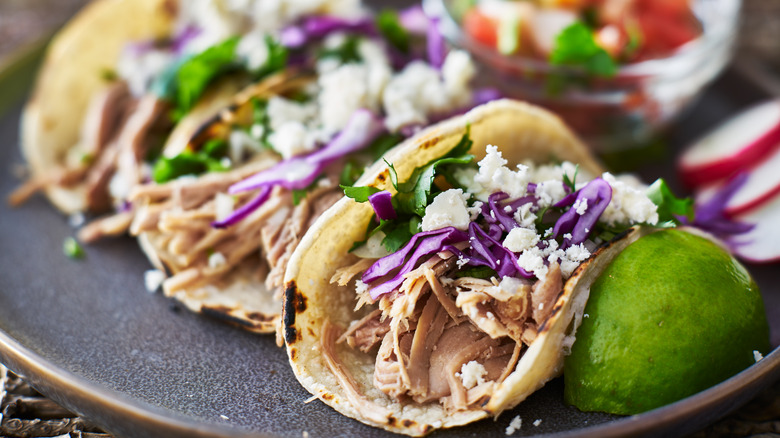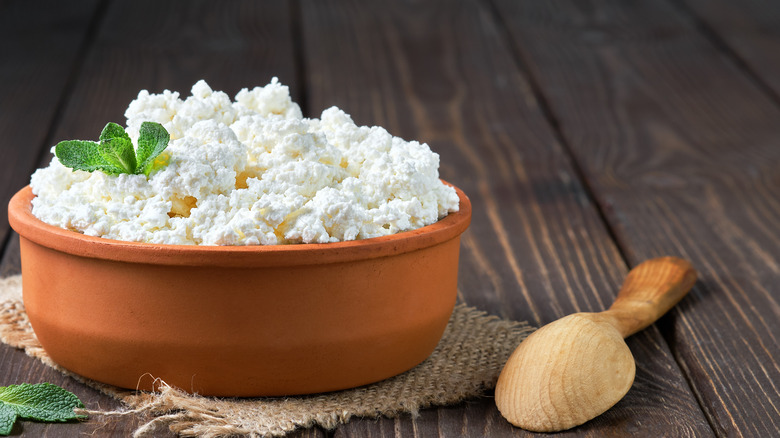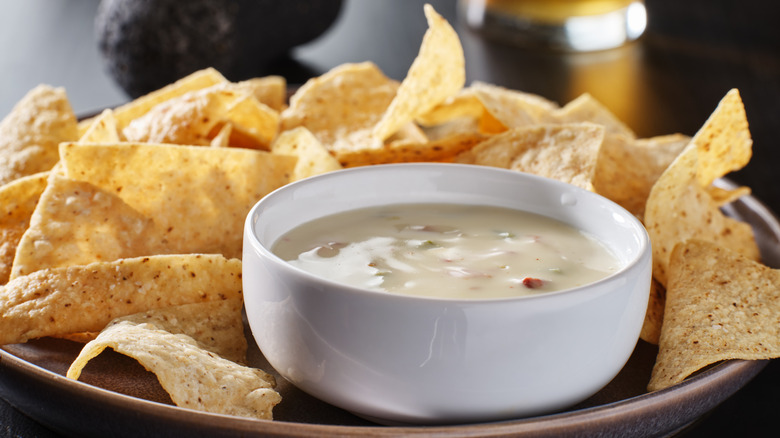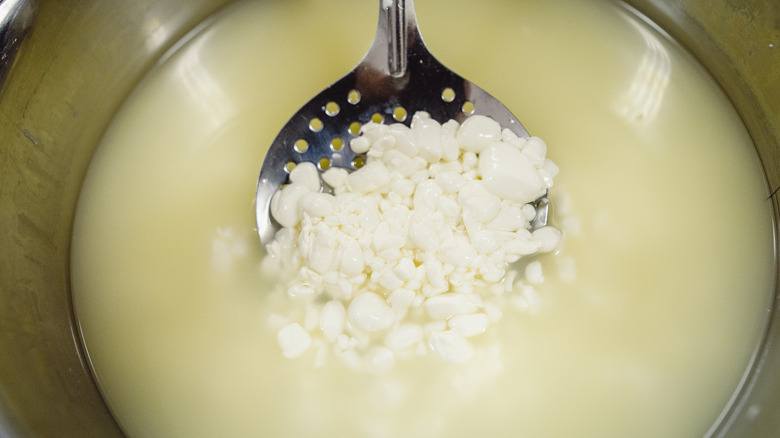What Makes Queso Fresco Unique
Cheese is the perfect topping for tacos, adds the ideal creaminess to cooked macaroni, and it's also delicious in salads or eaten on its own as a snack. While there's no shortage of scrumptious cheeses available, there's one Mexican-style cheese that stands apart from so many of the others, and that cheese is called queso fresco. This cheese has a tangy flavor and a crumbly texture that closely resembles feta cheese. And, like feta, queso fresco is a cheese that's usually served cold, not heated.
Although it's similar to the Mediterranean-style feta, queso fresco can often be confused with another crumbly Mexican cheese, cotija cheese, since both are served on top of Mexican dishes like tostadas, salads, and tapas. But if queso fresco is similar to feta, cotija cheese is reminiscent of parmesan and those two kinds of cheese aren't comparable in flavor or texture. The cool, tangy flavor of queso fresco adds balance to heartier dishes when it's used to top enchiladas, as reported by Kitchn. And as Food52 points out, queso fresco's tangy flavor can be used as a replacement in recipes that call for feta, but it's also a suitable substitute for goat cheese and ricotta.
What is queso fresco?
As reported by Culture, queso fresco, which means "fresh cheese" in Spanish, came about in the 1800s in Mexico during a time when refrigeration and methods of maturing cheese weren't widely available. According to Cheese Connoisseur, the process of aging cheese, also known as "affinage," happens when cheese is aged and dried in an underground room, similar to a wine cellar, which helps the cheese to dry out as well as develop more flavor and texture.
Since these aging processes weren't widely used, Wisconsin Cheese details that queso fresco is considered a form of farmer's cheese, which means that it is made without aging techniques. The resulting cheese has remained popular since its creation in the mid-1800s, and its popularity, as well as the way it's made, hasn't changed much over the years. In fact, queso fresco can easily be made by novice home cheesemakers with just a little bit of time and a few ingredients.
Queso vs. queso fresco
If you've ever dunked a tortilla chip into a creamy bowl of melted cheese dip, then you've likely experienced the cheesy, flavorful goodness of queso dip. This gooey dish can go by several names, queso dip, cheese dip, or simply queso, which is Spanish for cheese. While the popular dip's name might lead one to believe that the recipe includes queso fresco, since queso fresco isn't used as melting cheese, it isn't included in the crowd-favorite dip.
As Food 52 explains, when queso fresco is heated up it softens, but it doesn't melt and become smooth, and it's likely to stay chunky if you try to use it as a dip. Most of the dippable types of queso are made with cheeses that melt smoothly like this recipe from The Pioneer Woman which calls for white American and pepper jack cheeses. Although queso fresco isn't ideal for melting, the soft, flavorful crumbles are perfect for topping or even using as a filling in burritos or tacos.
Where you can find queso fresco and how to make it yourself
While it's fairly easy to find the crumbly Mexican cheese in the dairy section of most supermarkets, if it's not available, don't worry, there's another option for you if you want to eat it. Believe it or not, it's simple to make queso fresco at home. According to MasterClass, you can make queso fresco by adding heat and an acidic component to whole milk in order to make it curdle, which is what gives the cheese its unique crumbly texture.
And, as the recipe on MasterClass details, the form of acid you use can be vinegar or lemon juice. Serious Eats also has a recipe that echoes these ingredients and shares how using a cheesecloth or reusable fine mesh cloth is ideal for squeezing out the liquid from the curds because this process will make the best texture possible. Since this cheese is quick and easy to make, try your hand at this process the next time you want fresh, crumbly cheese to top your tacos or any other flavorful Latin American dishes.



